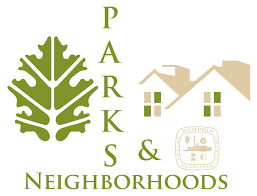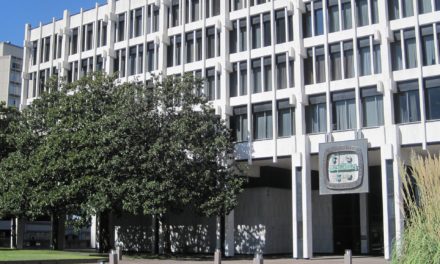Thumbnail: Accelerate Memphis could be the jump start that the Memphis parks master plan needs, kicking off what could be the city’s return to one of the country’s great park systems. Today, it is ranked 88th out of 97 cities and to climb to the middle of the rankings, it needs more and varied facilities and more acreage for parks.
**
Memphis Director of Parks and Neighborhoods Nick Walker got it right.
In an interview on Behind the Headlines, he corrected the conventional wisdom that Memphis has an abundance of parks and parkland.
That widespread belief was captured in the first paragraph of The Daily Memphian’s coverage: , “For a city of 164 parks covering 5,600 acres – taking in 30 community centers, seven golf courses, 17 aquatic centers, two skate parks, and numerous ballfields and basketball and tennis courts – the Memphis Parks system seems big enough.”
And yet, when compared to its peer cities – not to mention some we like to consider as inferior – Memphis doesn’t measure up.
According to the Trust for Public Land’s Park ParkScore, Memphis’ ranking among 97 large cities is a dismal #88.
And that’s down from #85 in 2016.
20 Years of Disinvestment
“For a town of 650,000 people that covers the square acreage that we cover, we don’t have enough green space,” Mr. Walker said. “We don’t have enough trails. We don’t have enough splash pads. We don’t have enough athletic facilities.”
He also pointed out that despite $40 million in city government’s Accelerate Memphis investment program, there will remain a great deal of deferred maintenance – a chorus heard across all city departments – but when it comes to parks, it’s especially true.
It’s been 20 years of disinvestment for Memphis parks, dating back mostly to when Memphis City Council, in a fit of pique, eliminated the Memphis Park Commission after 100 years of its leadership and advocacy for a city parks system hailed as one of the best in the U.S. Council wanted the Commission to supports its politics while the Commission was committed to supporting parks.
Essentially, what City Council disliked most was that the Park Commission was doing its job.
There was a failed private golf course in Whitehaven and the Council wanted the Park Commission to buy it; however, the just adopted $200,000 parks master plan recommended turning it into a park. In the end, ignored the master plan before it’s ink was barely dry, Council blew up the Commission, bought the golf course, and it’s cost taxpayers ever since.
At the same time, former Mayor Willie W. Herenton failed to increase funding for parks which could not be maintained and the teenagers operating park programs in the summer was also a casualty.
Greater Memphis
The Park Commission was created in 1900 when Memphis was a star of the Progressive Era. The “Greater Memphis” movement of that time was a loose group of business and civic leaders who promoted annexation of suburban areas to the east, creation of a public water and gas utility, extension of the city’s revolutionary sewer system, and construction of a system of parks and connected boulevards to unite the new city with the old.
These ideas – with the Park Commission as a centerpiece – emerged following the devastating yellow fever epidemics of the late 19th century, and Memphis was so optimistic about the future that it quadrupled its size – from four and a half square miles to 16 square miles.
The Park Commission inherited a “pitiful remainder of the parks given to the people in 1819 by the founders,” the Commercial Appeal wrote.
The now revered Promenade had been reduced to 1.75 acres between Union and Monroe and a five-acre city dump between Court and Jefferson. The 2.5 acres of Court Square featured dead trees and neglect in the care of the Police Department. An early property owner gave the Park Commission two-acre Astor Park, which would later be renamed Tom Lee Park. There were also 10 acres which had been the grounds of the City Hospital and would become Forrest Park and the five-acre home place of John Gaston, which became Gaston Park.
Putting Together The Basics
The Park Commission embarked on a remarkable plan of action. It bought Lea Woods, 335 acres, from founder John Overton’s heirs and named it East Park. (It was named Overton Park in a coupon contest conducted by the Evening Scimitar.) The Commission bought Wilderberger Farm’s 427 acres with 4,800 feet of riverfront and created Riverside Park (now MLK-Riverside Park).
To top it off, the park commissioners connected the two new parks with a parkway in 1902, beginning at Riverside Park in 1904 and Speedway (to become North Parkway) a year later. They hired George Kessler, one of the fathers of American urban planning, whose work in Memphis was one of the earliest efforts for comprehensive planning in the South.
In addition to the two large park projects, he was also hired to redesign and develop three of Memphis’ four original 1819 squares and the design of three new, small urban parks, including Forrest (now Health Sciences Park), Confederate (now Fourth Bluff), and Gaston. By 1906, the Park Commission had purchased, designed, developed, and opened more than 1,750 acres of parkland.
Peter Harnik, then director of the well-respected Center for City Park Excellence wrote the 2014 report, The Parks of Memphis – Past, President & Future, which cited the absence of a Park Commission as a missing piece for the Memphis park system. It contributes to the lack of a “unifying vision for Memphis around which a parks vision can be layered.” “A rigorous factual analysis of the Memphis park system bears out the anecdotal evidence that the city is below average in most park and recreation categories compared with other large U.S. cities,” he said.
Mr. Harnik also recommended the development of a parks friends group. After some starts and stops, that group, called Bloom, is now working to hire an executive director.
New Leadership
All of that is prologue.
Clearly, the Memphis park system has a distinguished pedigree, and that’s why it’s encouraging to hear Mr. Walker’s assertive ambitions for improving and repositioning it.
His varied background has served him well in City Hall. A sports reporter for five years for the Arkansas Democrat Gazette (Little Rock) and a data management administrator for seven years for Little Rock companies, he moved to Memphis in February 2017 to take the job as director of the performance management system developed by Memphis Chief Operating Officer Doug McGowen. After 19 months, he became Deputy Director of Parks and Neighborhoods, then Interim Director, and finally he was named Director 11 months ago.
In his new position, he has notably elevated parks on the city agenda and his influence can be seen in the prominence of parks in the Accelerate Memphis investment program.
Park Momentum
It’s hard to think of a time when the Memphis parks system is better positioned to make a leap forward and to move dramatically up the rankings.
There is Mr. Walker’s work as a champion for parks within city government. There is the new friends group. Most of all, there is a master plan that recommends $129.3 million in “visionary projects.” That’s in addition to $13.3 million largely to deal with deferred maintenance and $19.9 million for extra services and capital improvements projects.
Yes, it’s a lot of money, but Memphis has a lot of ground to cover. Memphis needs to increase a variety of facilities and their numbers, but it also needs to add acreage. To increase park acreage from 5% to 8%. That would move it from #88 to Buffalo’s ranking of #43.
The master plan had recommendations for expanded services, programming, and an emphasis on the kind of thinking and planning for the future that were neglected so often in the past. It’s ambitious and thorough, touching all the major issues although needing more specifics for expanding the amount of parkland.
There is the potential for this to be a seminal moment in the return of Memphis to one of the country’s best park systems. Accelerate Memphis is an important start and now there is a plan for moving ahead.
Hopefully, at some point, City of Memphis will consider reconstituting the Park Commission, whose past performance suggests the contributions it could make in achieving the ultimate goal of developing the park system that Memphis would have had it not lost 20 years to lethargy.
***
Join us at the Smart City Memphis Facebook page for daily articles, reports, and commentaries relevant to Memphis.





